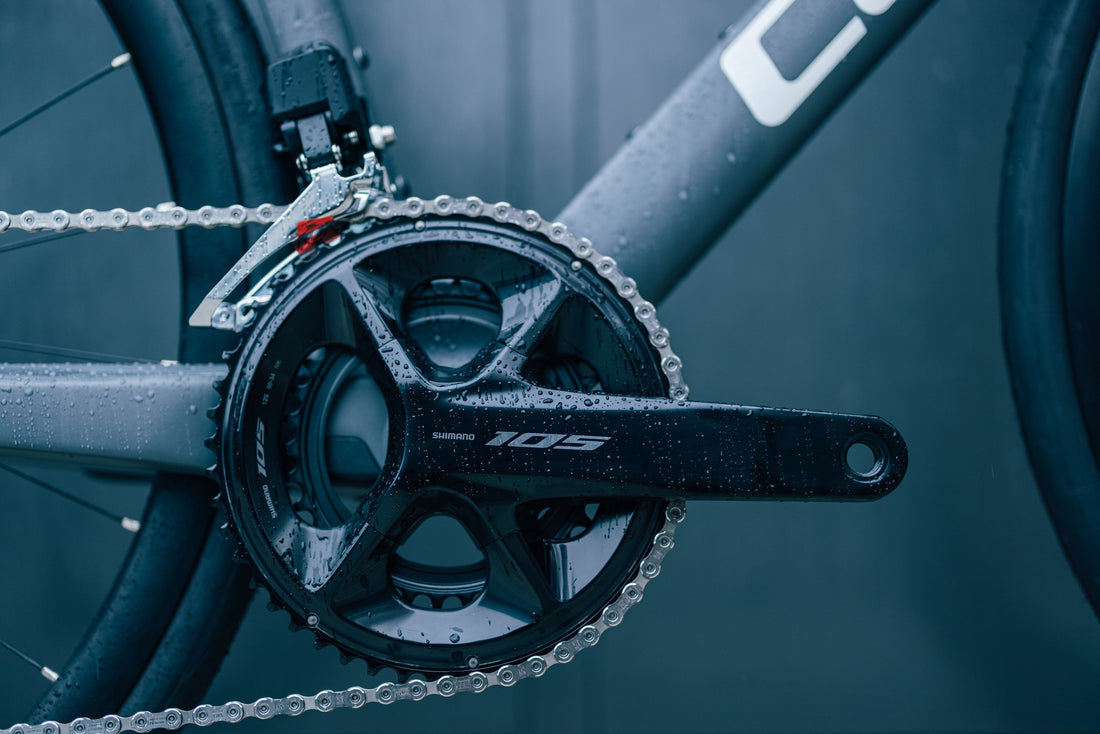Discover the essential link in your bike: the crankset. From the basics to advanced choices, our blog takes you through everything you need to know about cranksets. Whether you're an enthusiastic cyclist looking for performance improvements or a beginner looking to understand more about cycling components, we've got you covered. From the different types to replacing them, learn how to make the right choices for a smoother and more efficient ride.
What is a crankset?
A bike's crankset forms the connection between the bottom bracket, pedals and gears. Usually, the crankset consists of two parts, left and right, connected by the bottom bracket. In some models, the bottom bracket is part of the cranks, which saves weight and improves rigidity. Cranksets can be roughly divided into three categories: single, double and triple, depending on the number of gears.
Single crank
The single crank is a relatively new phenomenon that has gained considerable ground on mountain bikes, gravel bikes and cyclocross bikes in recent years. A single chainring offers several advantages:
- Despite the single chainring, you often retain the same range as with a double. With today's extended cassettes on mountain bikes and gravel bikes, you don't have to worry about running out of light gears.
- A single chainring is lighter, you naturally have one less leaf and don't need a front derailleur or left shifter.
- One-handed shifting. With rear gears only, you only need to shift on one side, allowing you to fully concentrate on the trail.
Double crank
A double crankset is mainly used on road bikes, gravel bikes and mountain bikes. The advantage of a double over a single is the greater number of gears. On the road, a constant cadence (number of revolutions per minute) is very important. Although the range of a single setup is similar, the intermediate steps are smaller on a double. This allows you to choose the ideal gear for any speed.
Triple crank
Triple cranksets are mostly seen on touring and trekking bikes these days, where the aim is to have the right gear in every situation. The advantage of a triple is the huge range with relatively small jumps between gears. This allows you to climb any mountain with a packed bike.
What should I pay attention to when buying a new crankset?
The most important thing is that the crankset is compatible with the rest of your bike. So it should have the right number of gears and fit your bottom bracket. If your bike has a hollow bottom bracket, the axle is fixed to the crankset. The axle can vary in diameter and length, with common standards such as 24 mm (Shimano), 29 mm (Sram) or 30 mm.
If the bottom bracket is not attached to the crankset, but to the bottom bracket bearings, it is usually a square axle.
Crank length
Cranksets are available in different lengths, usually ranging between 165 mm and 175 mm. The right length depends on your inseam and type of bike. A longer crank increases leverage, so you need to put less force on the pedals. Nowadays, shorter cranks are also increasingly used. A shorter crank increases the hip angle, allowing you to raise your saddle and adopt a more aerodynamic position. Moreover, shorter cranks make it easier to avoid the ground, allowing you to pedal more in corners. This explains why shorter cranks are often fitted on mountain bikes.
How do I replace my crankset?
If the bottom bracket is part of the crankset, you don't usually need special tools. With Sram, you unscrew the crank bolt (8 mm Allen bolt) and the crankset will come off automatically. With Shimano, you unscrew the two 5 mm Allen bolts and remove the plastic crank bolt with the right tool. Then you can remove the crankset with a few gentle taps.
If your crankset is attached to a fixed bottom bracket, such as with a square axle or a Bosch mid-mounted motor, you will need a crank puller. You loosen the crank bolt, screw the crank puller into the crank and then tighten it to push the crank off the axle.
Mounting the crankset is usually straightforward. For cranksets attached to the bottom bracket, simply tighten the crank bolt. The same goes for Sram cranks. For Shimano cranksets, first tighten the crank bolt hand-tight with the special tool and then tighten the two Allen bolts.
Are you looking for some new cranks? Then take a look at our range of cranksets. If you are not sure, our bicycle experts are ready to advise you and answer all your questions!

